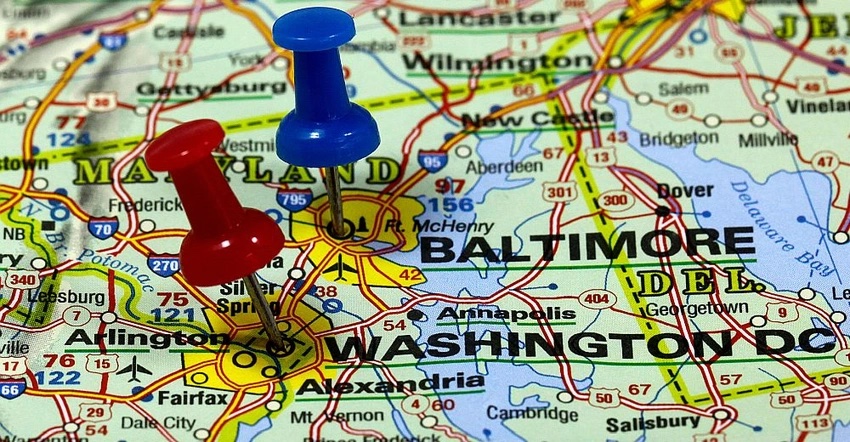When navigating the commercial real estate (CRE) landscape, understanding the nuances between different markets is crucial. For businesses and investors focused on the Washington DC and Baltimore CRE markets, recognizing the key differences can help make more informed decisions and leverage the unique opportunities each city offers. Here’s an in-depth look at what sets the DC and Baltimore CRE markets apart.
What Makes the DC and Baltimore CRE Markets Different
- Economic Drivers
- Market Size and Scope
- Accessibility and Transportation
- Investment Opportunities
Economic Drivers
Washington DC
Washington DC’s CRE market is primarily driven by the federal government and associated industries. This includes law firms, lobbying groups, and defense contractors. The presence of numerous international organizations and foreign embassies also contributes to a stable demand for office space. The government sector provides a steady stream of tenants, making the DC CRE market relatively resilient during economic downturns.
Baltimore
Baltimore, on the other hand, has a diverse economic base. Its CRE market is influenced by sectors such as healthcare, education, and logistics. Johns Hopkins University and Hospital, as well as the University of Maryland Medical Center, are significant drivers of demand for office and research space. The healthcare sector alone employs over 100,000 people in the Baltimore area . Additionally, Baltimore’s port facilities make it a vital hub for logistics and industrial real estate, with the Port of Baltimore handling over 43 million tons of cargo annually.
Market Size and Scope
Washington DC
The DC CRE market is larger and more mature compared to Baltimore. It boasts a higher concentration of Class A office spaces and a significant number of high-rise buildings. The demand for premium office space is consistently high, driven by prestigious law firms and multinational corporations. This results in higher rental rates and lower vacancy rates, particularly in prime locations such as downtown DC and the Capitol Hill area.
Baltimore
Baltimore’s CRE market is smaller but offers unique opportunities. The city has a mix of historic and modern buildings, with a growing trend toward adaptive reuse projects. The rental rates in Baltimore are generally lower than in DC, making it an attractive option for startups and small businesses looking for affordable office space. The city’s waterfront and industrial areas also present significant opportunities for redevelopment and investment.
Accessibility and Transportation
Washington DC
DC is well-connected with an extensive public transportation system, including the Metro, buses, and bike-sharing programs. The city’s infrastructure supports a high volume of daily commuters, with numerous transit options making it easier for businesses to attract talent from across the metropolitan area. Proximity to major highways and three airports (Reagan National, Dulles International, and BWI) further enhances its accessibility.
Baltimore
Baltimore also benefits from strong transportation links but on a different scale. The city’s light rail and bus systems provide connectivity within the metropolitan area, while the MARC train offers a direct link to Washington DC. Baltimore/Washington International Thurgood Marshall Airport (BWI) serves both cities, providing a convenient travel option for businesses. BWI handles roughly 27 million passengers annually. The port of Baltimore adds another layer of connectivity, especially for industries reliant on shipping and logistics.
Investment Opportunities
Washington DC
Investing in DC’s CRE market often means competing for high-demand properties with low vacancy rates and high rental yields. The market’s stability and prestige make it a prime choice for institutional investors and those looking for long-term appreciation. However, entry costs are typically higher, and the regulatory environment can be complex.
Baltimore
Baltimore presents a more affordable entry point for investors. The city’s ongoing revitalization efforts, particularly in areas like Harbor East and Fells Point, offer significant potential for value-add investments. Baltimore’s diverse economy and strategic location also make it an attractive option for those looking to diversify their CRE portfolio.
Conclusion
Both Washington DC and Baltimore offer distinct advantages and opportunities in the commercial real estate market. DC’s robust, government-driven market provides stability and prestige, ideal for those seeking prime office space and long-term investment. Meanwhile, Baltimore’s diverse economy, affordable entry points, and ongoing revitalization projects present unique opportunities for growth and innovation. By understanding the specific characteristics of the DC and Baltimore CRE markets, investors and businesses can make strategic decisions that align with their goals and capitalize on the strengths of each city.
If you are interested in a free broker opinion of value or just learning more about investing in commercial real estate in Maryland, Virginia, or Washington DC, please contact us. Avenue Real Estate is a leading full service commercial brokerage in the Baltimore and Washington DC areas and we would love to help you explore your options and make informed decisions about commercial real estate investments.

